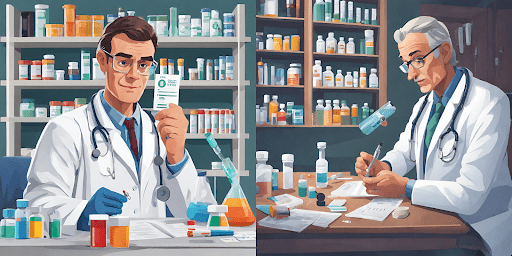Understanding the 9 Panel Drug Test for Detection and Analysis

Drug testing is a crucial tool used by employers, law enforcement agencies, and healthcare providers to ensure safety and compliance. Among the various drug testing methods available, the 9-panel drug test stands out for its comprehensive approach to detecting a wide range of substances. In this guide, we’ll delve deep into the intricacies of the 9-panel drug test, exploring its purpose, components, detection windows, and analysis methods.
What is a 9-panel Drug Test?
The 9-panel drug test is a screening method designed to detect the presence of nine different substances in a biological specimen, typically urine. These substances include commonly abused drugs such as marijuana (THC), cocaine, amphetamines, opiates, benzodiazepines, barbiturates, methadone, methamphetamine, and phencyclidine (PCP). By testing for multiple substances simultaneously, the 9-panel drug test offers a comprehensive assessment of an individual’s drug use history.
Components of the 9-Panel Drug Test:
The 9-panel drug test typically consists of nine individual tests, each targeting a specific drug or class of drugs. These tests may use immunoassay technology to screen for the presence of drugs in urine samples. Positive results from the initial screening are confirmed through a secondary analysis method such as gas chromatography-mass spectrometry (GC-MS) or liquid chromatography-mass spectrometry (LC-MS). This two-step process helps minimize false positives and ensures the accuracy of the test results.
Detection Windows:
The detection window for each drug varies depending on factors such as the individual’s metabolism, the dose and frequency of drug use, and the type of drug being tested. Most medicines can typically be found in urine for a few days to many weeks following use. However, some drugs, such as marijuana, may be detectable for an extended period, especially in chronic users. Understanding the detection windows for different drugs is essential for interpreting test results accurately.
Purpose and Applications:
The 9-panel drug test is widely used in various settings, including:
- Workplace Drug Testing: Many employers require pre-employment or random drug testing as part of their drug-free workplace policies. The 9-panel drug test helps employers identify individuals who may pose a safety risk due to drug use.
- Law Enforcement: Law enforcement agencies use drug testing to monitor individuals on probation or parole and suspects involved in criminal investigations. The 9-panel drug test assists in enforcing drug-related laws and ensuring compliance with court orders.
- Healthcare Settings: Healthcare providers may use drug testing to assess patients with suspected substance abuse disorders or to monitor medication adherence in patients receiving controlled substances. The 9-panel drug test provides valuable information for diagnosing and treating substance abuse disorders.
- Sports Organizations: Athletes may be subject to drug testing to ensure fair play and maintain the integrity of sports competitions. The 9-panel drug test helps sports organizations detect performance-enhancing substances and illicit drugs that may give athletes an unfair advantage.
Interpreting Test Results:
Interpreting the results of a 9-panel drug test requires careful consideration of various factors, including the presence of specific drugs, the concentration of drugs detected, and any potential medications or dietary supplements that could affect the results. False positives or negatives can occur due to cross-reactivity with other substances, improper specimen collection or handling, or laboratory errors. Confirmatory testing and medical review by a qualified healthcare professional are often necessary to verify test results and determine the appropriate course of action.
Conclusion:
The 9-panel drug test plays a vital role in detecting and analyzing drug use in various contexts, from workplace safety to healthcare diagnostics. By understanding its components, detection windows, and applications, individuals and organizations can make informed decisions regarding drug testing policies and procedures. With proper interpretation and follow-up, the 9-panel drug test is a valuable tool for promoting safety, compliance, and well-being in our communities.





